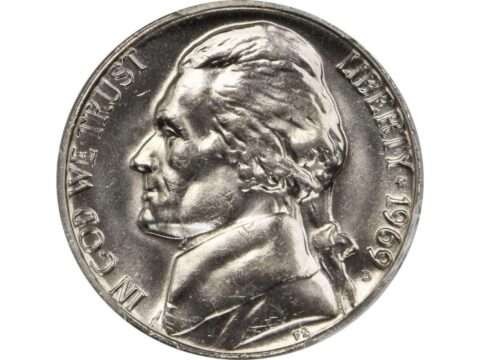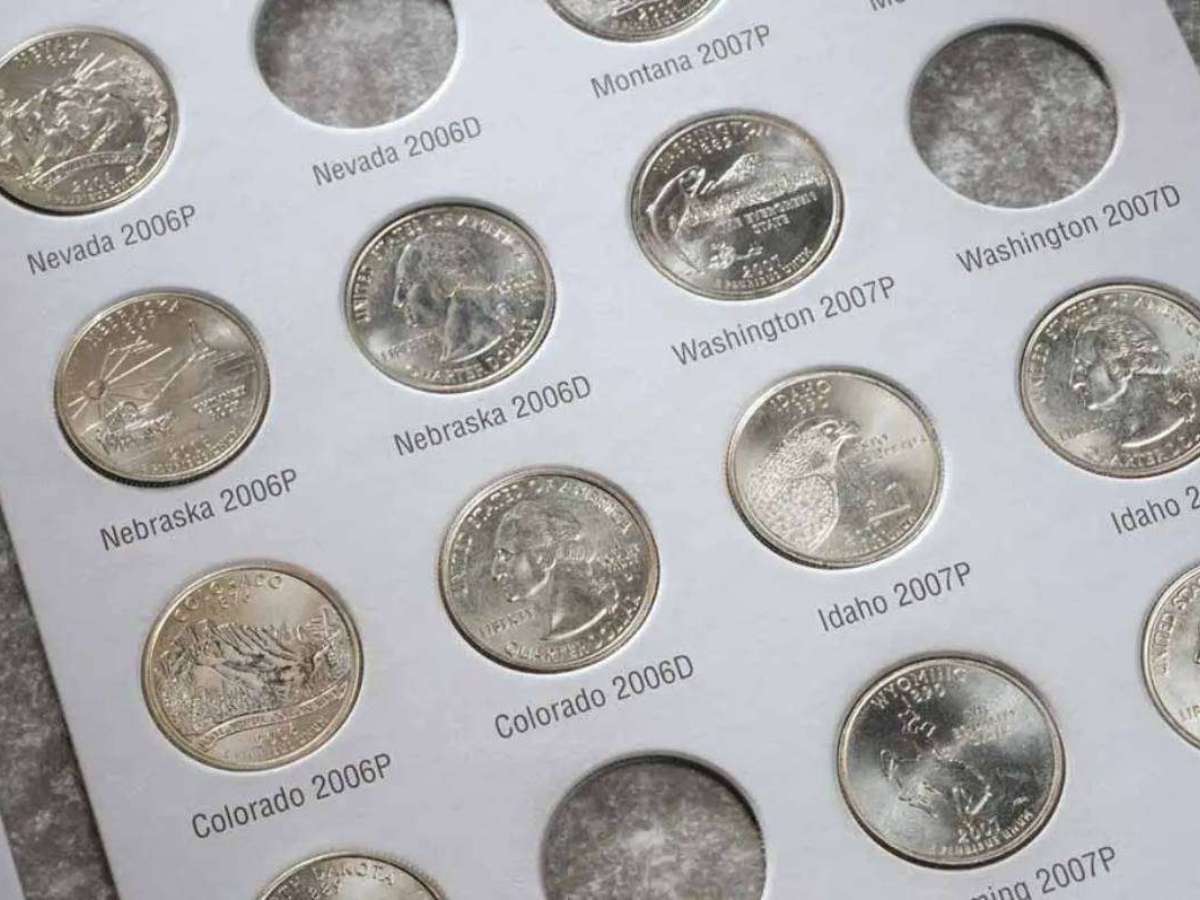Are you looking for rare & valuable Jefferson nickels worth money?
Well, you might want to keep an extra-close eye on your 1969 nickels… One 1969 nickel sold for a whopping $33,600!
So, what makes this coin so special? Why would a 1969 nickel fetch more than $30,000 in an auction?
In this article, you will learn why. Plus, you’ll find out exactly what you should be looking for on your 1969 nickels…
Why Are Some 1969 Nickels Worth So Much Money?

While some 1969 nickels are worth thousands of dollars (as we see with the ultra-valuable 1969 nickel that’s the focus of this article), most aren’t worth so much.
In fact, the typical, worn 1969 nickel you’ll find in pocket change is worth just its face value of 5 cents.
If we break down the production figures for the 1969 nickel across the Denver (“D”) and San Francisco (“S”) mints (the Philadelphia Mint did not strike nickels in 1969), we’ll see that these nickels are quite common:
- 1969-D nickel — 202,807,500 minted
- 1969-S nickel — 123,009,631 minted
- 1969-S proof nickel — 2,934,631 minted
The 1969-D and 1969-S business-strike nickels are worth just 5 cents if worn (and without errors or varieties).
Uncirculated 1969-D and 1969-S nickels usually trade for 50 cents to $1 apiece.
The 1969-S proof nickel, which was specially struck for collectors and sold in proof sets, is generally worth around $1.
So, how is it possible that a 1969 nickel sold for over $33,000?
Here’s why it’s worth so much…
Some Full Steps Nickels Are Rare
Have you ever heard of Full Steps Jefferson nickels?
It’s not a type of Jefferson nickel, per se, but rather a reference to well-struck Jefferson nickels.
Full Steps nickels are those that show 5 or 6 complete steps at the base of Monticello on the reverse (“tails side”) of the nickel.
Amazingly, it’s far less common to find fully struck Jefferson nickels than you might think!
During certain years, very few if any were made at all. This is not so much an intentional thing as it is a result weak striking pressure, poor planchet quality, or other factors that made production of fully struck nickels difficult.
Bear in mind, as well, that nickel is a very tough metal…
Even though the U.S. five-cent coins known as “nickels” are actually 25% nickel and 75% copper (and not pure nickel), the nickel alloy used for making the nation’s five-cent coins can be very difficult on the coining equipment. This can hamper the coin’s strike and thus, in part, is why fully struck Jefferson nickels are so hard to find.
For certain years during the 1960s, ’70s, ’80s, and ’90s, only one or two examples of a Full Steps nickel of a given date are known to exist. This is a big deal when it comes to rarity and price — because so many collectors want to complete their Jefferson nickel collections, and they want Full Steps examples to help them achieve that goal!
In the case of the 1969-D nickel that sold for $33,600, it is indeed a Full Steps specimen. We’ll talk more about it below…
How To Tell If You Have A Full Steps Nickel
Before you start looking for Full Steps nickels in your spare change, be advised that the sought-after Full Steps (or “FS”) designation applies only to uncirculated Jefferson nickels.
That means any you find with wear are automatically not going to be Full Steps examples. So, that lightly worn 1969-D nickel you’ve found in pocket change that looks “almost perfect” and that you think has Full Steps on it?… Nope — it’s not really a Full Steps specimen.
So, what do you need to look for?
First, your 1969-D nickel absolutely must be uncirculated — it can’t have any wear on it at all. That’s the first thing.
If you’re looking for Full Steps nickels in pocket change, you’re looking in the wrong place. You’ll need to search through bank rolls, which are more likely to contain uncirculated coins.
Next, when you’re examining uncirculated Jefferson nickels, pay attention to the step detail at the base of Monticello.
See the little series of steps leading up to the portico? (It’s the porch-like area with the columns and front door as seen on the coin.) For a Jefferson nickel to be declared as a Full Steps coin, the stairway must reveal at least 5 clear, unbroken steps. If you see 6 steps… even better! But, generally speaking, 5 fully delineated steps are required for the Full Steps designation.
NOTE: It’s important to understand the importance of the “5 fully delineated steps” mentioned above. There absolutely can’t be any abrasions, cuts, nicks, or any sign of weakness in any of the steps. They must be unbroken, unblemished, and fully complete for the coin to count as Full Steps.
With all of this in mind, you’ll start to see why some Full Steps Jefferson nickels are truly rare. This is certainly the case with the 1969-D nickel!
The Most Valuable 1969 Nickel
So, about that rare 1969 nickel worth thousands of dollars…
Yes, it’s a 1969-D Full Steps nickel — the only one graded as such.
Take a close look at the photo of the 1969-D Full Steps nickel below…
Notice how clear those steps are? Crisp line after crisp line. Unbroken. Unblemished.

This magnificent 1969-D Full Steps nickel was encapsulated by Professional Coin Grading Service — which graded the coin Mint State-65 Full Steps, or MS65FS.
In 2016, it was offered in a public auction by Stack’s Bowers Galleries — where it sold for $30,550. The coin hit the auction circuit again several years later. In 2021, the coin was once more commissioned to Stack’s Bowers Galleries, which sold the coin for $33,600.
The value of the 1969-D Jefferson nickel may only continue increasing as the years go on — especially if the specimen we’re talking about here remains the only example of this issue graded with the Full Steps designation!




